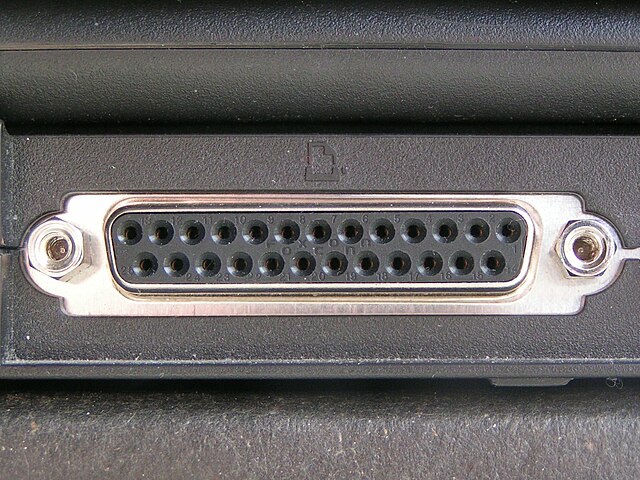In computing, a parallel port is a type of interface found on early computers for connecting peripherals. The name refers to the way the data is sent; parallel ports send multiple bits of data at once, as opposed to serial communication, in which bits are sent one at a time. To do this, parallel ports require multiple data lines in their cables and port connectors and tend to be larger than contemporary serial ports, which only require one data line.
A DB-25 connector often used for a parallel printer port on IBM PC compatible computers, with the printer icon.
Micro ribbon 36-pin female, such as on printers and on some computers, particularly industrial equipment and early (pre-1980s) personal computers.
Mini-Centronics 36-pin male connector (top) with Micro ribbon 36-pin male Centronics connector (bottom)
The Apple II Parallel Printer Port connected to the printer via a folded ribbon cable; one end connected to the connector at the top of the card, and the other end had a 36-pin Centronics connector.
A computer port is a hardware piece on a computer where an electrical connector can be plugged to link the device to external devices, such as another computer, a peripheral device or network equipment.
Examples of computer connector sockets on various laptops
Ports on the back of the Apple Mac Mini (2005)
Mini DisplayPort
DisplayPort cable








